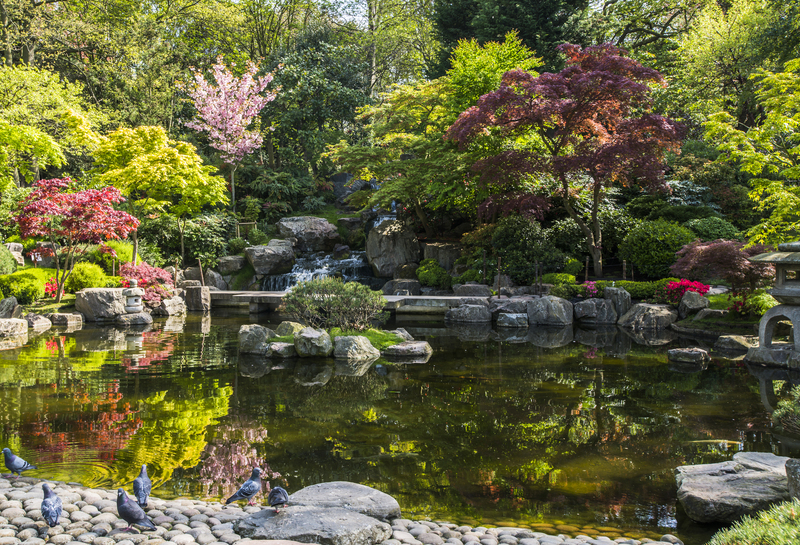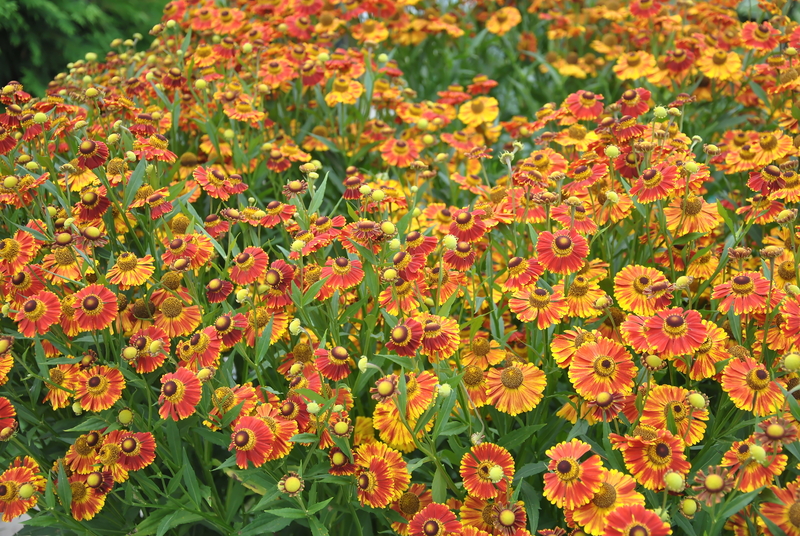Building a Pet-Proof Sanctuary for Garden Enthusiasts
Posted on 18/08/2025
Building a Pet-Proof Sanctuary for Garden Enthusiasts
Are you a passionate gardener whose love for flora sometimes clashes with the playful antics of your furry friends? If you're looking to transform your outdoor space into a haven for both plants and pets, you're in the right place. Creating a pet-proof sanctuary for garden enthusiasts is not only rewarding but essential for preserving peace, safety, and beauty in your backyard. In this comprehensive guide, we'll explore effective strategies, pet-friendly plants, practical design tips, and common pitfalls--helping you cultivate a thriving, pet-friendly garden sanctuary that everyone can enjoy.

Why Pet-Proofing Your Garden Matters
Garden enthusiasts and pet lovers often face the challenge of balancing their love for both. Dogs love to dig, cats enjoy nibbling on greenery, and sometimes, the result can be catastrophic for your carefully nurtured plants. Pet-proofing your garden does more than protect your landscaping investments. It also ensures your pets are safe from toxic plants and hazardous gardening equipment. By creating a sanctuary that is both beautiful and secure, you embrace harmonious outdoor living.
- Protects plants from damage caused by digging, chewing, and trampling
- Keeps pets safe from toxic flora and garden chemicals
- Prevents soil erosion and garden disruption
- Encourages healthy outdoor activities for pets
Step-by-Step Guide to Building a Pet-Proof Garden Sanctuary
Evaluate Your Outdoor Space
Start by scrutinizing your current garden layout. Walk the perimeter and take note of:
- Areas where pets tend to dig or play
- Delicate or rare plant beds needing protection
- Existing hazards like exposed wiring or sharp garden tools
- Shady versus sunny spots ideal for both plants and pet lounging
Select Pet-Safe Garden Plants
One of the most critical steps in pet-proof garden design is plant selection. Many common garden plants--including lilies, azaleas, and foxgloves--are toxic to dogs and cats. Instead, opt for pet-friendly garden plants that won't harm your companions if nibbled.
- Spider Plant (Chlorophytum comosum) - Non-toxic and resilient
- Marigolds - Repels pests and safe for pets
- Bamboo (Bambusa) - Hardy and non-toxic
- Snapdragons - Vibrant, easy to grow, and pet-safe
- Rosemary - Useful in the kitchen and harmless to pets
**Tip:** Always check the ASPCA's database before introducing new plants to your garden.
Install Pet-Proof Fencing and Borders
Physical boundaries are essential for any pet-proof garden sanctuary. Proper fencing not only keeps your pets in--and unwanted critters out--but also shields delicate plant beds from roughhousing.
- Sturdy Fencing: Use solid wood, vinyl, or metal fences at least 4-6 feet high, especially for high-jumping breeds.
- Raised Garden Beds: Elevate vulnerable plants (like herbs or vegetables) out of your pets' reach.
- Decorative Borders: Low stone or metal borders can help deter diggers and define play areas versus no-go zones.
Remember: Regularly check your fencing for damage, digging holes, or gaps that pets could exploit!
Designate Pet Zones
Every well-designed pet-proof garden sanctuary should have clearly marked areas for both your pets and plants. This segregation helps minimize accidents and fosters positive behaviors.
- Pet Paths: Mulched or gravel walkways provide easy navigation and reduce wear on lawns.
- Digging Pit: Offer an alternative with a built-in sandpit or loose soil corner where dogs can dig to their hearts' content.
- Shady Resting Areas: Use pergolas or shade-giving trees; artificial pet shelters also work well for hot climates.
- Play Zones: Incorporate sturdy toys, tunnels, and agility features for active pets.
Opt for Safe Gardening Practices
Garden enthusiasts often rely on fertilizers, pesticides, and mulches that can pose risks to pets. To maintain both garden health and pet safety, switch to organic or non-toxic alternatives wherever possible.
- Avoid Cocoa Mulch: It contains theobromine, which is highly toxic to dogs.
- Skip Chemical Pesticides: Choose neem oil, diatomaceous earth, or companion planting to deter pests naturally.
- Store Tools Safely: Keep sharp tools, fertilizers, and pesticides in locked garden sheds, safely out of reach.
Innovative Ideas for a Pet-Proof Sanctuary
Vertical Gardening
If space is at a premium or you've got particularly persistent diggers, vertical gardening is an excellent solution. Use trellises for vine plants and wall-mounted pockets for flowers or herbs. Not only does this keep valuable plants safe, but it adds a lush, textured dimension to your landscape.
Water Features with Safety in Mind
Many garden enthusiasts love the tranquility of ponds and fountains. For a pet-safe garden sanctuary, ensure these features are shallow, well-covered (to prevent accidental falls), and free from toxic chemicals like algaecides.
- Secure pond mesh or netting over water surfaces
- Keep stagnant water sources clean to avoid mosquito larvae
- Use recirculating fountains to promote freshness
Pet-Friendly Ground Covers
Replace delicate grass or bark with durable, non-toxic ground covers that can stand up to foot traffic and paws yet remain comfy and cool.
- Creeping Thyme - Hardy, fragrant, and non-toxic
- Irish Moss - Soft and gentle for sensitive paws
- Kentucky Bluegrass - Resilient and easy to repair
Common Garden Hazards to Avoid
Toxic Plants and Mulches
Many popular garden plants--including oleander, hydrangea, and sago palm--are poisonous to pets. Double check your planting list, and never use cocoa bean mulch.
Sharp or Edged Objects
Broken plant pots, sharp tools, and thorny shrubs can injure curious pets. Keep garden tools stowed and choose non-spiky varieties for hedging.
Standing Water and Chemicals
Buckets of stagnant water can harbor bacteria and mosquito larvae, while garden chemicals may poison pets even in small doses. Always clean up spills promptly, and opt for eco-friendly solutions.
Engaging with Your Pets in the Garden
A successful pet-proof sanctuary for garden lovers is also about engagement. Train pets using positive reinforcement to avoid sensitive areas, and spend quality outdoor time together for mutual benefits. Dogs can be taught to stay on paths or use digging pits, while cats may prefer elevated perches or shaded alcoves.
- Practice obedience commands near garden beds
- Use treats and praise to promote good behavior
- Supervise new garden additions to monitor reactions
- Offer enrichment activities like scent trails or hidden toys
Practical Design Tips for Lasting Pet-Proof Gardens
Embrace Durable Materials
Paths, patios, and edging should use chew-resistant, claw-proof materials such as natural stone, brick, or reinforced timber. Likewise, invest in robust plant cages or netting for especially tempting beds.
Integrate Sensory Delights
Enhance your pet-friendly garden sanctuary with sensory plants--like catnip for felines or fragrant herbs for canines. Wind chimes, bubbling water, and soft lighting add interest without threatening pet safety.
Plan for Shade and Shelter
Pets, especially in summer and winter, need safe zones to escape the elements. Plant shade trees or install waterproof canopies. A discrete kennel or weatherproof pet house ensures everyone is comfortable year-round.
Maintenance and Monitoring
Routine checks are essential. Inspect fences and borders for gaps, watch for newly toxic plant growth, and replenish mulch or ground cover as needed. Keep your pets' interests--and safety--at the heart of every garden update.
- Seasonal Inspections: After storms or pests, verify that fencing and shelters remain intact.
- Pet Health: Watch for symptoms of poisoning like vomiting, drooling, or lethargy, and consult your vet immediately if concerned.
- Eco-Friendly Care: Maintain soil and plant health using organic compost and safe fertilizing practices.

Frequently Asked Questions About Pet-Proof Garden Sanctuaries
How can I stop my dog from digging up the flower beds?
Dogs often dig out of boredom or instinct. Provide a separate digging zone, reinforce beds with mesh or rocks, and reward your dog when it sticks to the correct areas.
Which garden plants are safest for pets?
Some of the best pet-proof garden plants include snapdragons, marigolds, bamboo, rosemary, and spider plants. Avoid lilies, daffodils, and foxgloves.
Are there any landscaping materials I should avoid?
Yes--skip cocoa mulch, which can be fatal to dogs, and avoid using sharp stone or thorny branches for barriers. Opt for pet-safe, rounded materials instead.
Is it possible to have a vegetable garden in a pet-friendly yard?
Absolutely! Use elevated raised beds, protective mesh, and teach your pets to avoid these areas.
Conclusion: Cultivate Harmony with a Pet-Proof Sanctuary
A pet-proof sanctuary for garden enthusiasts is more than a protected yard--it's a lifestyle that celebrates both your greenery and your beloved pets. With thoughtful design, regular maintenance, and the right plant choices, you can enjoy beautiful blooms and a happy, healthy home for your animal companions. Start building your ideal outdoor retreat today, and nurture a garden sanctuary that thrives with every member of your household.
Ready to transform your garden into a safe, pet-friendly paradise? Share your experiences or questions below, and join a community of garden lovers who love their pets just as much as their plants!

